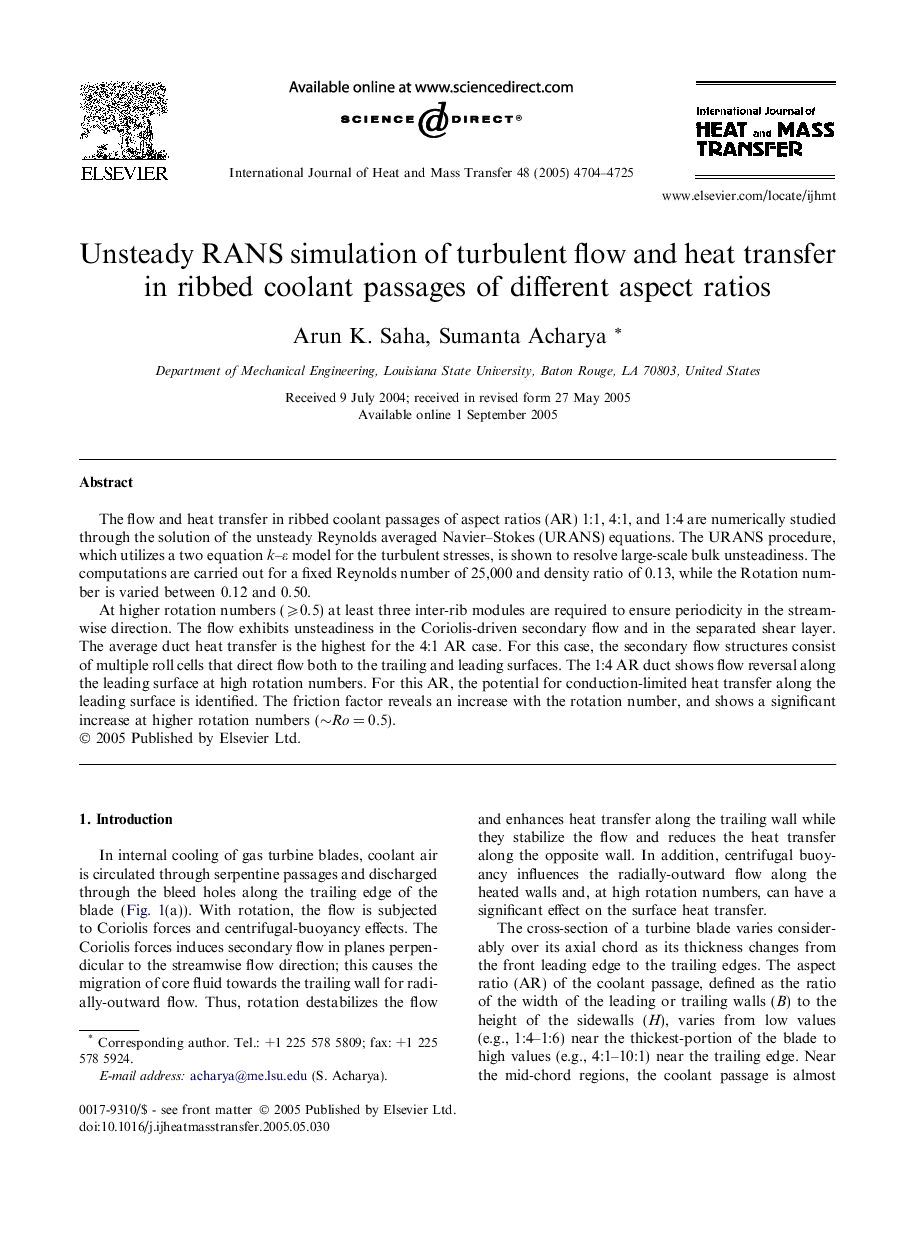| Article ID | Journal | Published Year | Pages | File Type |
|---|---|---|---|---|
| 662138 | International Journal of Heat and Mass Transfer | 2005 | 22 Pages |
The flow and heat transfer in ribbed coolant passages of aspect ratios (AR) 1:1, 4:1, and 1:4 are numerically studied through the solution of the unsteady Reynolds averaged Navier–Stokes (URANS) equations. The URANS procedure, which utilizes a two equation k–ε model for the turbulent stresses, is shown to resolve large-scale bulk unsteadiness. The computations are carried out for a fixed Reynolds number of 25,000 and density ratio of 0.13, while the Rotation number is varied between 0.12 and 0.50.At higher rotation numbers (⩾0.5) at least three inter-rib modules are required to ensure periodicity in the streamwise direction. The flow exhibits unsteadiness in the Coriolis-driven secondary flow and in the separated shear layer. The average duct heat transfer is the highest for the 4:1 AR case. For this case, the secondary flow structures consist of multiple roll cells that direct flow both to the trailing and leading surfaces. The 1:4 AR duct shows flow reversal along the leading surface at high rotation numbers. For this AR, the potential for conduction-limited heat transfer along the leading surface is identified. The friction factor reveals an increase with the rotation number, and shows a significant increase at higher rotation numbers (∼Ro = 0.5).
